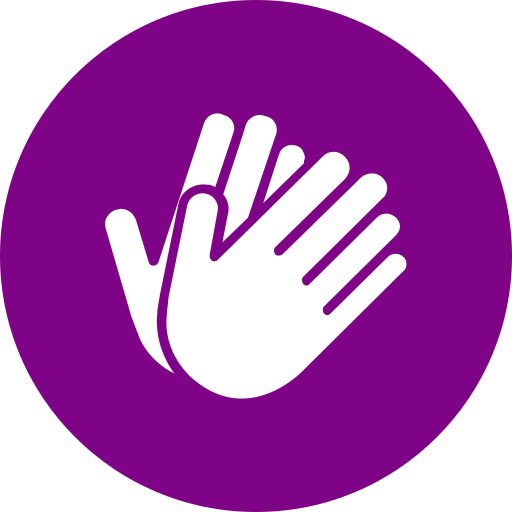New Study Reveals Atrial Fibrillation is Three Times More Common than Previously Estimated
A new study has revealed that atrial fibrillation (A-fib), a condition characterized by an irregular heartbeat, is three times more prevalent in the U.S. than previously believed. Researchers from the University of California, San Francisco (UCSF) now estimate that A-fib affects 10.5 million adults, or nearly 5% of the adult population, compared to the earlier estimate of 3.3 million.
Study Findings
The UCSF research team analyzed the medical records of nearly 30 million adults who received "acute or procedural care" in California from 2005 to 2019. They found that about 2 million of these patients had been diagnosed with A-fib. The rate of diagnosis increased over time, from 4.5% of patients between 2005 and 2009 to 6.8% between 2015 and 2019. These findings were standardized to reflect national trends, resulting in an estimated 10.5 million cases of A-fib across the country.
A-fib is one of the leading causes of stroke and can increase the risk of heart failure, blood clots, chronic kidney disease, and dementia.
Dr. Gregory Marcus, a senior author of the study and a cardiologist at UCSF Health, noted that the team expected A-fib to be more common than previously reported but were surprised by the extent of the increase. “These data provide some comfort to the millions of patients with this disease, knowing they are not alone,” Marcus says. He hopes the study will lead to more resources for A-fib patients, including funding for research and treatment, such as cardiac rehabilitation programs, which are currently not covered by Medicare for A-fib patients.
Why Are A-fib Cases Increasing?
Experts suggest that the rise in A-fib cases is due to both an actual increase in cases and improved detection methods:
Increased Risk Factors: As people live longer with chronic conditions like high blood pressure, diabetes, obesity, sleep apnea, and other health issues, they become more susceptible to A-fib. Obesity, which is on the rise in the U.S., is also a significant factor, especially among younger patients.
Improved Detection: Advances in medical monitoring technology and consumer devices like Apple Watches and Fitbits are catching more cases of A-fib. "Hardly a week goes by without someone coming in saying, 'My Apple Watch detected atrial fibrillation, and I didn't even feel it,'" says Dr. Rod Passman, director of the Center for Arrhythmia Research at Northwestern University. However, he emphasizes that a proper diagnosis from a healthcare provider is essential.
Aging Population: “A-fib is known to increase with age," notes Dr. Paul Wang, director of the Stanford Cardiac Arrhythmia Service. As the population ages, A-fib cases are expected to rise.
How to Reduce Your Risk of A-fib
Adopting healthy habits can help reduce the risk of developing A-fib:
Manage Chronic Conditions: Control conditions like diabetes and hypertension, which are linked to A-fib. Dr. Frederick Ehlert, a cardiac electrophysiologist at Columbia University, advises patients to manage their blood pressure and monitor blood glucose levels.
Maintain a Healthy Lifestyle: Regular physical activity, a healthy weight, adequate sleep, stress management, and staying hydrated are key to reducing A-fib risk.
Limit Alcohol and Caffeine: Reducing or eliminating substances like alcohol, caffeine, and nicotine, which can trigger A-fib, may help those with or at risk of the condition.
What to Do if You Have A-fib
While consumer tech like Apple Watches can detect potential signs of A-fib, a formal diagnosis requires tests like an electrocardiogram (EKG) conducted by a clinician. Early detection and treatment are vital in preventing severe outcomes like stroke and blood clots.
“There are now many effective treatments, such as catheter ablation and well-tolerated medications, that can help manage the condition,” Marcus says. Dr. Ehlert adds that although A-fib is rarely life-threatening in the short term, it’s important to seek medical attention if you experience symptoms like a racing heart, shortness of breath, or lightheadedness.
source:-yahoo life
A new study has revealed that atrial fibrillation (A-fib), a condition characterized by an irregular heartbeat, is three times more prevalent in the U.S. than previously believed. Researchers from the University of California, San Francisco (UCSF) now estimate that A-fib affects 10.5 million adults, or nearly 5% of the adult population, compared to the earlier estimate of 3.3 million.
Study Findings
The UCSF research team analyzed the medical records of nearly 30 million adults who received "acute or procedural care" in California from 2005 to 2019. They found that about 2 million of these patients had been diagnosed with A-fib. The rate of diagnosis increased over time, from 4.5% of patients between 2005 and 2009 to 6.8% between 2015 and 2019. These findings were standardized to reflect national trends, resulting in an estimated 10.5 million cases of A-fib across the country.
A-fib is one of the leading causes of stroke and can increase the risk of heart failure, blood clots, chronic kidney disease, and dementia.
Dr. Gregory Marcus, a senior author of the study and a cardiologist at UCSF Health, noted that the team expected A-fib to be more common than previously reported but were surprised by the extent of the increase. “These data provide some comfort to the millions of patients with this disease, knowing they are not alone,” Marcus says. He hopes the study will lead to more resources for A-fib patients, including funding for research and treatment, such as cardiac rehabilitation programs, which are currently not covered by Medicare for A-fib patients.
Why Are A-fib Cases Increasing?
Experts suggest that the rise in A-fib cases is due to both an actual increase in cases and improved detection methods:
Increased Risk Factors: As people live longer with chronic conditions like high blood pressure, diabetes, obesity, sleep apnea, and other health issues, they become more susceptible to A-fib. Obesity, which is on the rise in the U.S., is also a significant factor, especially among younger patients.
Improved Detection: Advances in medical monitoring technology and consumer devices like Apple Watches and Fitbits are catching more cases of A-fib. "Hardly a week goes by without someone coming in saying, 'My Apple Watch detected atrial fibrillation, and I didn't even feel it,'" says Dr. Rod Passman, director of the Center for Arrhythmia Research at Northwestern University. However, he emphasizes that a proper diagnosis from a healthcare provider is essential.
Aging Population: “A-fib is known to increase with age," notes Dr. Paul Wang, director of the Stanford Cardiac Arrhythmia Service. As the population ages, A-fib cases are expected to rise.
How to Reduce Your Risk of A-fib
Adopting healthy habits can help reduce the risk of developing A-fib:
Manage Chronic Conditions: Control conditions like diabetes and hypertension, which are linked to A-fib. Dr. Frederick Ehlert, a cardiac electrophysiologist at Columbia University, advises patients to manage their blood pressure and monitor blood glucose levels.
Maintain a Healthy Lifestyle: Regular physical activity, a healthy weight, adequate sleep, stress management, and staying hydrated are key to reducing A-fib risk.
Limit Alcohol and Caffeine: Reducing or eliminating substances like alcohol, caffeine, and nicotine, which can trigger A-fib, may help those with or at risk of the condition.
What to Do if You Have A-fib
While consumer tech like Apple Watches can detect potential signs of A-fib, a formal diagnosis requires tests like an electrocardiogram (EKG) conducted by a clinician. Early detection and treatment are vital in preventing severe outcomes like stroke and blood clots.
“There are now many effective treatments, such as catheter ablation and well-tolerated medications, that can help manage the condition,” Marcus says. Dr. Ehlert adds that although A-fib is rarely life-threatening in the short term, it’s important to seek medical attention if you experience symptoms like a racing heart, shortness of breath, or lightheadedness.
source:-yahoo life
New Study Reveals Atrial Fibrillation is Three Times More Common than Previously Estimated
A new study has revealed that atrial fibrillation (A-fib), a condition characterized by an irregular heartbeat, is three times more prevalent in the U.S. than previously believed. Researchers from the University of California, San Francisco (UCSF) now estimate that A-fib affects 10.5 million adults, or nearly 5% of the adult population, compared to the earlier estimate of 3.3 million.
Study Findings
The UCSF research team analyzed the medical records of nearly 30 million adults who received "acute or procedural care" in California from 2005 to 2019. They found that about 2 million of these patients had been diagnosed with A-fib. The rate of diagnosis increased over time, from 4.5% of patients between 2005 and 2009 to 6.8% between 2015 and 2019. These findings were standardized to reflect national trends, resulting in an estimated 10.5 million cases of A-fib across the country.
A-fib is one of the leading causes of stroke and can increase the risk of heart failure, blood clots, chronic kidney disease, and dementia.
Dr. Gregory Marcus, a senior author of the study and a cardiologist at UCSF Health, noted that the team expected A-fib to be more common than previously reported but were surprised by the extent of the increase. “These data provide some comfort to the millions of patients with this disease, knowing they are not alone,” Marcus says. He hopes the study will lead to more resources for A-fib patients, including funding for research and treatment, such as cardiac rehabilitation programs, which are currently not covered by Medicare for A-fib patients.
Why Are A-fib Cases Increasing?
Experts suggest that the rise in A-fib cases is due to both an actual increase in cases and improved detection methods:
Increased Risk Factors: As people live longer with chronic conditions like high blood pressure, diabetes, obesity, sleep apnea, and other health issues, they become more susceptible to A-fib. Obesity, which is on the rise in the U.S., is also a significant factor, especially among younger patients.
Improved Detection: Advances in medical monitoring technology and consumer devices like Apple Watches and Fitbits are catching more cases of A-fib. "Hardly a week goes by without someone coming in saying, 'My Apple Watch detected atrial fibrillation, and I didn't even feel it,'" says Dr. Rod Passman, director of the Center for Arrhythmia Research at Northwestern University. However, he emphasizes that a proper diagnosis from a healthcare provider is essential.
Aging Population: “A-fib is known to increase with age," notes Dr. Paul Wang, director of the Stanford Cardiac Arrhythmia Service. As the population ages, A-fib cases are expected to rise.
How to Reduce Your Risk of A-fib
Adopting healthy habits can help reduce the risk of developing A-fib:
Manage Chronic Conditions: Control conditions like diabetes and hypertension, which are linked to A-fib. Dr. Frederick Ehlert, a cardiac electrophysiologist at Columbia University, advises patients to manage their blood pressure and monitor blood glucose levels.
Maintain a Healthy Lifestyle: Regular physical activity, a healthy weight, adequate sleep, stress management, and staying hydrated are key to reducing A-fib risk.
Limit Alcohol and Caffeine: Reducing or eliminating substances like alcohol, caffeine, and nicotine, which can trigger A-fib, may help those with or at risk of the condition.
What to Do if You Have A-fib
While consumer tech like Apple Watches can detect potential signs of A-fib, a formal diagnosis requires tests like an electrocardiogram (EKG) conducted by a clinician. Early detection and treatment are vital in preventing severe outcomes like stroke and blood clots.
“There are now many effective treatments, such as catheter ablation and well-tolerated medications, that can help manage the condition,” Marcus says. Dr. Ehlert adds that although A-fib is rarely life-threatening in the short term, it’s important to seek medical attention if you experience symptoms like a racing heart, shortness of breath, or lightheadedness.
source:-yahoo life





